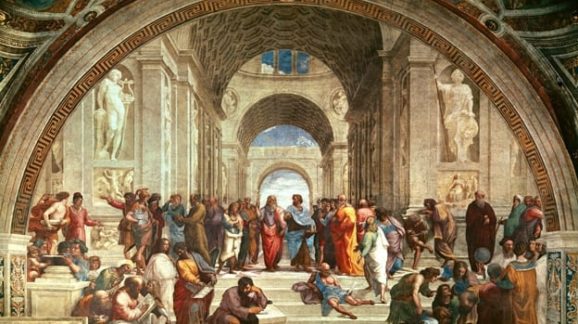Trade Made Renaissance Art Possible

Trade and specialization make all kinds of life-enriching innovations possible. In fact, Italian Renaissance art was one of them, a gift that continues to inspire us five centuries later. Re-opening trade with the Middle and Far East is what allowed Europe to climb out of the Middle Ages and into the Renaissance. Venice, in particular, was a hub of trading activity, as Peter Frankopan points out at Kindle location 4260 of his 2016 book The Silk Roads: A New History of the World:
By the late fifteenth century, nearly 5 million pounds of spices were passing through Venice each year… It also seems to have been the main point of entry for pigments used in paintings. Often referred to collectively as “oltremare de venecia” (Venetian goods from overseas), these included verdigris (literally, green from Greece), vermilion, fenugreek, lead-tin yellow, bone black, and a gold substitute known as purpurinus or mosaic gold. The most famous and distinctive, however, was the rich blue that came from lapis lazuli, mined in Central Asia. The golden age of European art—of Fra Angelico and Piero della Francesca in the fifteenth century, and then of artists like Michelangelo, Leonardo da Vinci, Raphael, and Titian—owed much to their ability to use colours drawn from pigments that were part of the extension of contacts with Asia on the one hand nd rising levels of disposable wealth to pay for them on the other.
So the next time you look at The Birth of Venus or the Mona Lisa, remember that trade made them possible, and artificial trade barriers could have deprived the world of profound beauty.
In fact, the process continues today. Michelangelo and his contemporaries had to make their own paints. Long-distance traders brought them the materials, but the artists themselves had to mix the ingredients. And if they didn’t do it just right, it could be a very expensive mistake. Today, you or I could walk into an art supply store and trade money worth a few hours’ labor for oil paints, or watercolors, or any other kind of paint, in almost any color imaginable. Digital art and photography don’t even need paint. Just a computer, a camera, or even a smartphone.
Trade makes humankind’s highest cultural accomplishments possible. This is just one reason it is worth defending. For more reasons, see the new CEI study “Traders of the Lost Ark.”